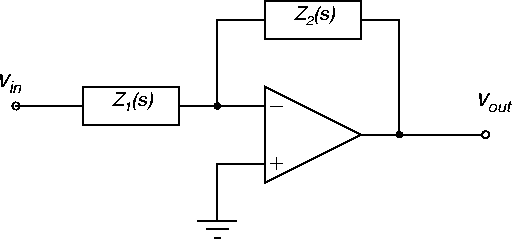 |
Filters constructed from resistors, capacitors and inductors are called passive, since there are no active elements. Passive filters have the advantage of simplicity, but are incapable of amplification (gain is always less than one), and may require inductors which are relatively heavy and costly.
Active filters contain an active element such as an operational amplifier, e.g. Figure 53. Active filter circuits can be used to implement a wide range of specs, do not need inductors, and can achieve gains greater than one.
The transfer function for the active filter of Figure 53
is
For a low pass filter, take
Z1(s) = R1,
![]() .
.
For a high pass filter, take
![]() ,
Z2(s) = R2.
,
Z2(s) = R2.
Another active filter architecture is used in Hardware Lab 4.
ANU Engineering - ENGN2211